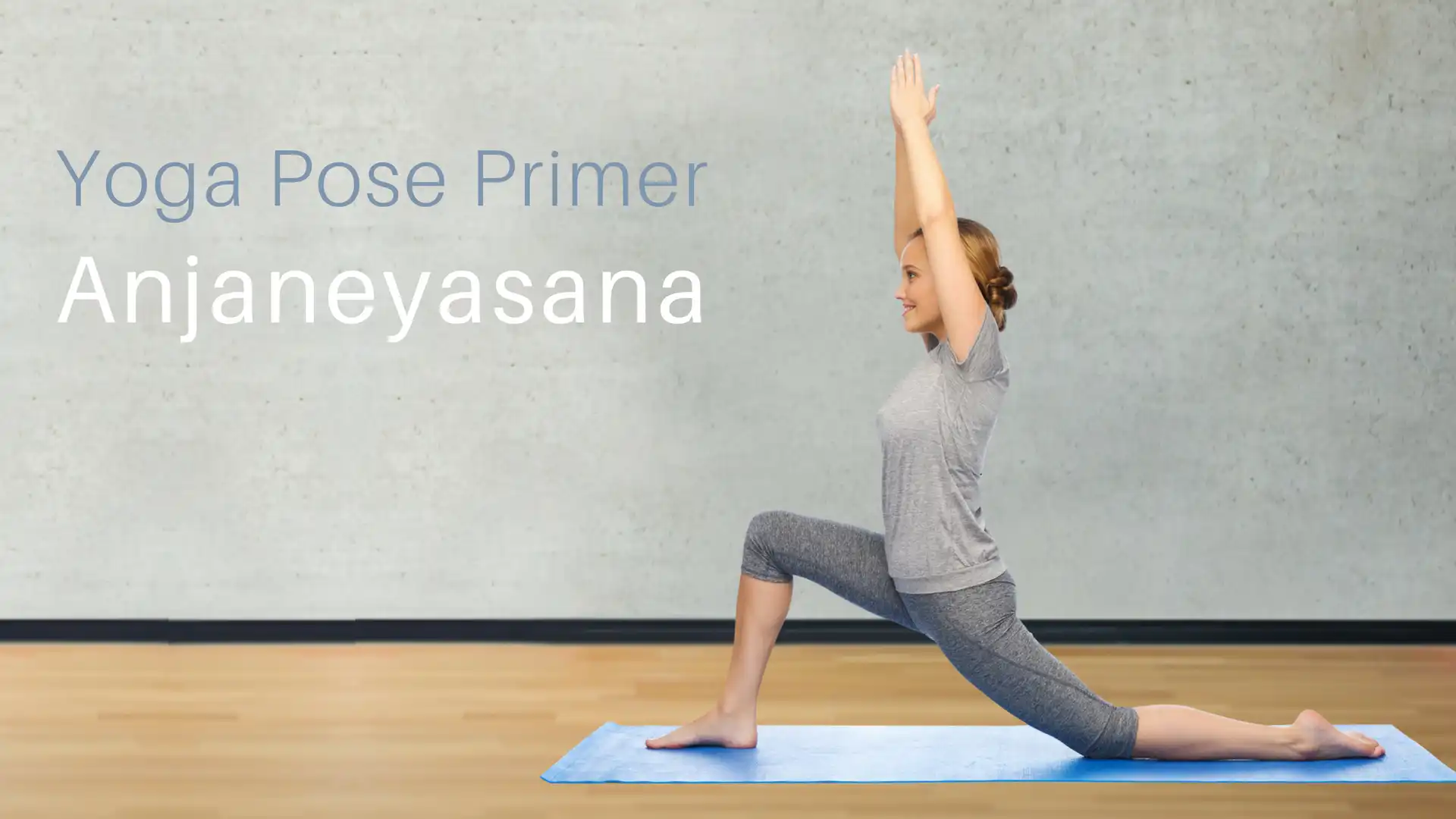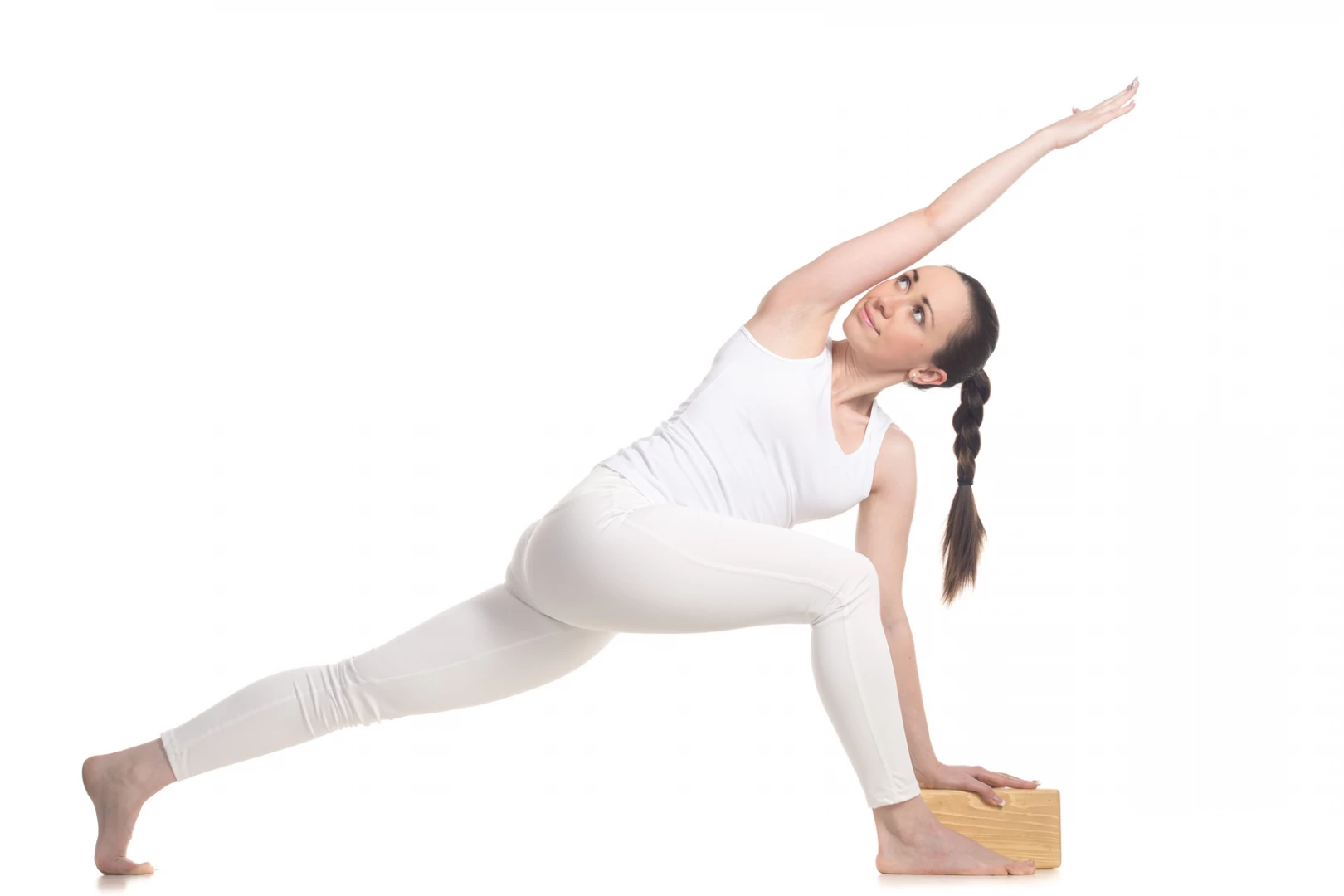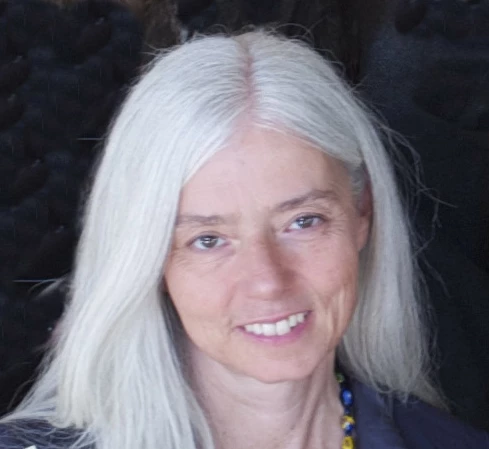Yoga Pose Primer: Anjaneyasana-Reach for the Sun

According to legend, as a child, Anjaneya was a tad over-confident. Considering his origins, this is hardly unexpected. Born to Anjana (a supernatural woman) and Kesari (king of the monkeys), he had magical powers and royalty in his genetic inheritance. On top of all that, he was godson to the wind god, Vayu, and was considered to be a reincarnation of Lord Shiva.
So when he gazed upward one day and mistook the sun for a glowing piece of fruit, he naturally decided to make a giant leap for it, hoping to snatch it out of the sky. He did this repeatedly, unharmed by the sun’s scorching rays that would have dissolved mortals. When Suryadeva, the sun god, enlisted Indra, god among gods, to strike Anjaneya down, a power struggle of otherworldly proportions ensued, causing Vayu to leave in a huff, jeopardizing all life forms on Earth.
But even gods are willing to compromise if they must. Indra agreed to make Anjaneya immortal only if Vayu returned to his post. Anjaneya was renamed Hanuman, the monkey god whose exploits are honored in Hanumanasana, also known as “splits.” Meanwhile, Anjaneya boasts his own pose. Anjaneyasana (Lunge Pose) is a pose that expresses the human desire to leap up and capture that glowing fruit high in the sky.
Anjaneyasana combines grounding and expansion. Its skyward reach comes from its earthbound stability. It lengthens the quadriceps and psoas muscles, extends the lower back, and expands the chest and abdomen. It energizes as it stabilizes balance.
How to Practice Anjaneyasana

- I like to approach Anjaneyasana from Adho Mukha Svanasana (Downward-Facing Dog Pose). Begin on your hands and knees on a nonskid mat. Press your hands into the floor and lift your torso upward until your arms and legs are straight, your body forming an inverted “V” shape, with your sit bones at the apex. Take a few full breaths here.
- Bend your knees, letting your weight settle into your feet as if you’re preparing to jump forward. Spring your right leg forward so that it lands between your hands. If your leg is not feeling especially springy, you may take however many steps you need in order to place your foot even with your hands.
- Allow your left knee to come to the floor. Make sure your right foot is evenly planted on the floor—heel to toe and inside to outside—and your heel is directly below your knee.
- Press your right foot and left knee into the floor, then stretch the right knee forward and the left knee back so that the distance between them lengthens. If your left knee feels as if it’s grinding into the floor, you may place a blanket under it for padding.
- Take care not to allow your left hip joint to hang toward the floor. Allowing the hip joint to collapse downward can cause the neck of your femur to press into the rim of the hip socket. Over time, this can damage the labrum of the socket and cartilage of the femur head. Instead, draw the very top of your thigh slightly back toward your back thighs—millimeters—to stabilize your hip joint.
- With your hands on the floor on either side of your right foot, take a few deep breaths, imagining the breath moving all the way down into the left thigh muscles.
- Stay here for 5 to 10 deep breaths before moving back into Downward-Facing Dog Pose. You can also try the arm variation below.
Reach for the Sun

- Grounding the right foot and left knee, lift the torso upright, and place your hands on your right thigh. Take a few deep breaths.
- If you like, you can now extend your arms up vertically, and if your back is willing, tilt your torso back slightly so that your chest is looking skyward. Ground your legs as you reach upward, taking care not to collapse the front of your left hip joint toward the floor, as above.
- Take a few full breaths before returning your hands to the floor, returning to Dog Pose, and repeating on your other side.
Revolved Anjaneyasana
 Donna Farhi came up with my favorite variation of Anjaneyasana—Parvrtta (Revolved) Anjaneyasana. My students love this pose too.
Donna Farhi came up with my favorite variation of Anjaneyasana—Parvrtta (Revolved) Anjaneyasana. My students love this pose too.
- From the Low Lunge, turn your right (front) foot out 90 degrees. Scoot the foot back so that it aligns with your left hipbone and sits about a foot or so out in front of your pelvis. Adjust the position of your foot so that it grounds evenly.
- Now, turn your torso to face your right leg. Ground your left hand and extend the right arm toward the sky.
- If your arms are long enough, you might be able to circle your right arm back behind you and place your fingertips on the floor. If you do this variation, press both hands into the floor to rotate your ribs further and open your heart toward the sky.
- If your arms are not long enough to do this, continue to root your left hand as you reach your right arm upward.
- Take 5 to 10 deep breaths before rotating back to Low Lunge.
- Repeat on the other side.
It is helpful to remember that the power to spring skyward originates in a downward, rooting motion through your legs and feet. (Try jumping with straight legs, without first bending your knees and letting your weight sink into the ground and you’ll understand the importance of grounding in order to spring upward.) Grounding the legs also balances the heating and cooling qualities of the pose, protecting us from agitation and overheating as we reach for the sun.
In Anjaneyasana, the grounding of the front foot and back knee stabilizes our balance and allows for the full flowering of the upper body. It enables us mortal yoga practitioners to soak up Suryadeva’s luminous glow from the sustaining foundation of our own Mother Earth.
Study with Dr. Baxter Bell and YogaUOnline – Yoga For Healthy Aging: Yoga Tools To Keep Your Blood Pressure Balanced. 

Charlotte Bell began practicing yoga in 1982 and began teaching in 1986. She was certified by B.K.S. Iyengar in 1989 following a trip to Pune. In 1986, she began practicing Insight Meditation with her mentors Pujari and Abhilasha Keays. Her asana classes blend mindfulness with physical movement. Charlotte writes a column for Catalyst Magazine and serves as editor for Yoga U Online. She is the author of two books: Mindful Yoga, Mindful Life and Yoga for Meditators, both published by Rodmell Press. She also edits the Hugger Mugger Yoga Products¹ blog and is a founding board member for GreenTREE Yoga, a non-profit that brings yoga to underserved populations. A lifelong musician, she plays oboe and English horn in the Salt Lake Symphony and the folk sextet Red Rock Rondo whose 2010 PBS music special won two Emmys.



